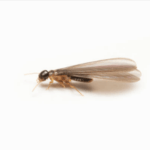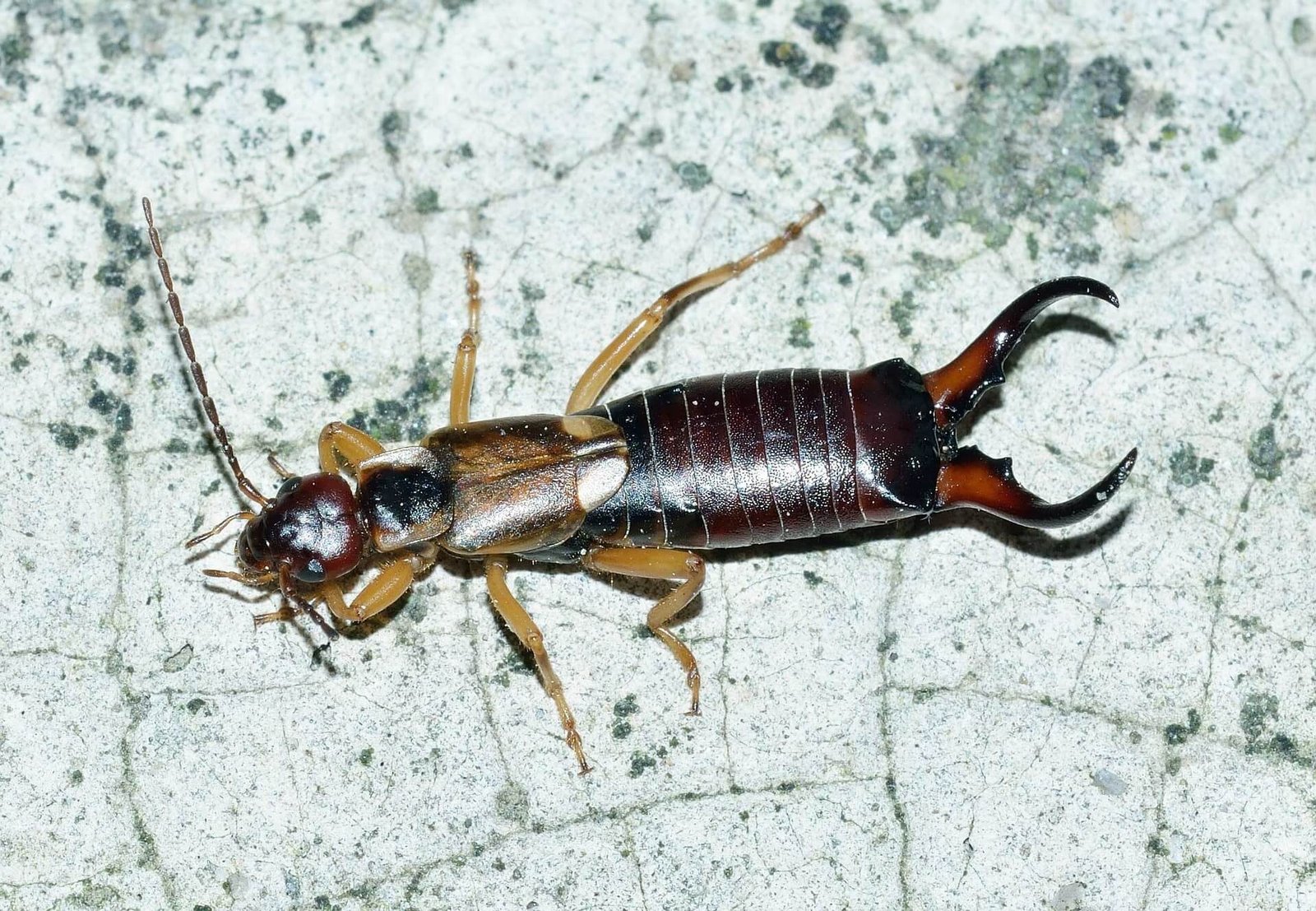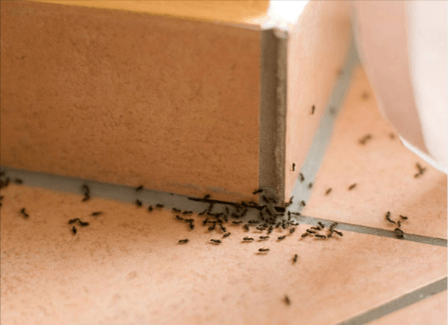Clothes moths are little, wingless insects that may do a lot of harm to garments. The webbing clothes moth and the casemaking clothing moth are the two most common kinds of these pests. Both clothes moths and carpet moths lay their eggs on textiles. Clothes moth larvae chew holes and weaken the fibers of these textiles, causing potential permanent harm.
Clothes moths may wreak havoc on clothing and textiles, especially on more valuable or sensitive objects. If you care about the longevity of your wardrobe and other fabric goods, you need to take steps to prevent and eliminate clothes moths.
This article will discuss methods, both chemical and natural, for exterminating clothing moths. Preventative actions against future infestations will also be discussed. If you follow these guidelines, you can prevent clothes moths from destroying your wardrobe.
Identification of Clothes Moths
The first step in avoiding and getting rid of a clothing moth infestation is to identify the insects responsible. Clothes moths are tiny—typically only about a half an inch long—and their bodies are a pale yellow or white. Their long, skinny wings are hairy at the edges and fold neatly over their body when not in use. Clothes moths like the darkness of night for their activities.
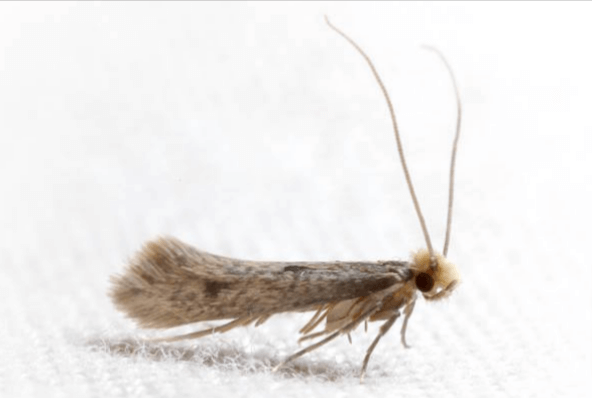
There are various indicators of an infestation beyond simply spotting the actual moths. Tiny rips or holes in furniture, rugs, or your clothing are the first clue. Clothes moth larvae, which feed on a fabric’s fibers, are responsible for these holes. Another telltale symptom of an infestation is a silken webbing left behind by the larvae as they tunnel through the cloth.
Cocoons or pupae are another telltale symptom of a clothing moth infestation. The larvae construct cocoons, which are small, spherical, silken structures, in order to develop into pupae. The next stage of a clothing moth’s life cycle is the pupae, which take the form of tiny, oval-shaped cocoons and can often be discovered in close proximity to the contaminated textiles.
Prevention Methods
Preventing Clothes Moth Infestations
- Regular vacuuming: Carpets, rugs, and upholstery are perfect hiding places for clothes moths. Eggs and larvae can be removed with routine vacuuming. Make sure you get under the furniture and along the baseboards when you vacuum.
- Storing clothing and fabrics: The best way to keep clothes moths away from your belongings is to store them in airtight containers or bags. Before putting clothes away, be sure to wash and dry them completely. You might use containers with secure lids or vacuum-sealed bags.
- Using cedar or lavender: The aroma of cedar and lavender is said to deter clothes moths. You may protect your clothing and other fabrics from moths by using sachets or oils infused with these scents. Place sachets in storage spaces such as wardrobes, drawers, and cupboards.
- Avoiding damp or humid environments: Moths that eat clothing prefer warm, humid climates. Maintain a dry house by repairing any water damage or leaks and running a dehumidifier as needed.
Proper Cleaning and Storage of Vintage or Delicate Clothing
- Clean carefully: Cleaning vintage or delicate garments requires special attention and should be done by hand or by a professional cleaner. Do not rub or wring the fabric, and do not use bleach or harsh detergents.
- Store with care: Clothes that are old or fragile should be kept in muslin or acid-free tissue paper. Fabric damage might occur if you keep your clothes in plastic containers or bags. Keep out of the light and heat and in a cold, dry area.
Natural Remedies
Natural Remedies for Getting Rid of Clothes Moths
- Freezing: Clothes and materials can be frozen to effectively kill eggs and larvae. Put them in a freezer-safe bag and let them chill for at least three days. Take them out of the freezer and let them warm up to room temperature before you use or store them.
- Essential oils: Lavender, cedarwood, and tea tree oil are some of the most effective essential oils for keeping clothing moths at bay. Put a few drops of the oil on a cotton ball and tuck it into your drawers, cupboards, or totes to keep pests at bay. Oils can also be diluted with water and sprayed onto clothes as an alternative method.
- Pheromone traps: Clothes moth adults can be captured with the help of pheromone traps. The moths get stuck in the glue within the traps, so they can’t mate. The traps can be put up in storage spaces and closets where clothes moths are known to congregate.
Effectiveness and Limitations of Natural Remedies
- Freezing: Clothes moth eggs and larvae can be killed by freezing. However, this method is impractical for bulky goods or a lot of fabric.
- Essential oils: Clothes moths can be repelled with essential oils, albeit their efficacy may not match that of chemical repellents. There’s also the risk that the oils will ruin your clothing.
- Pheromone traps: Pheromone traps can be used to catch adult male clothing moths, but they won’t kill the insects or their larvae. Additionally, their effectiveness is restricted to a small region, therefore for bigger storage areas, additional traps may be required.
Natural therapies are a safe alternative to chemical techniques for getting rid of clothes moths. Consider the benefits and drawbacks of each treatment option before settling on a course of action.
Chemical Solutions
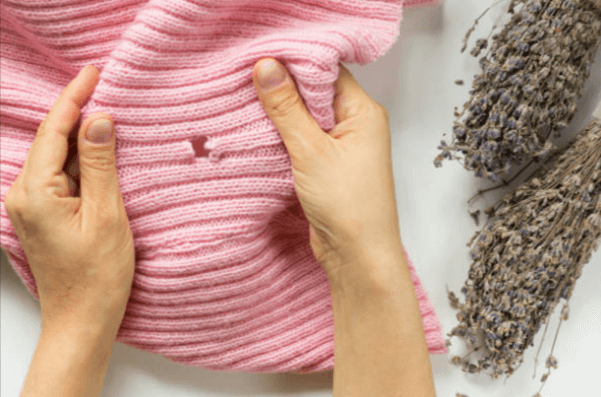
Chemical Solutions for Getting Rid of Clothes Moths
Insecticidal sprays or foggers
Clothes moths in any stage of development can be eliminated with insecticide sprays or foggers. Caution should be exercised when using these items because they contain compounds that are harmful to insects. To avoid contamination, don’t use them near any places where people or food will be.
Mothballs or crystals
Clothes moths are killed by the chemicals found in mothballs and crystals. The insects are killed by the gases that are released. If you want to keep the fumes from these goods from getting out and harming humans or animals, you should store them in airtight containers. Careful handling and strict adherence to the directions are required.
Safety Precautions and Proper Use of Chemical Solutions
- Insecticidal sprays or foggers: Wear protective clothes, such as gloves, a mask, and goggles, when handling insecticidal sprays or foggers. This product should not be used anywhere that food or humans will be handled. Ventilate the area and clean your hands completely after using the lotion.
- Mothballs or crystals: In order to confine the odors, mothballs and crystals should be stored in airtight containers. Keep them away from any areas frequented by people or animals. Please use caution when handling the materials and read and follow all directions.

